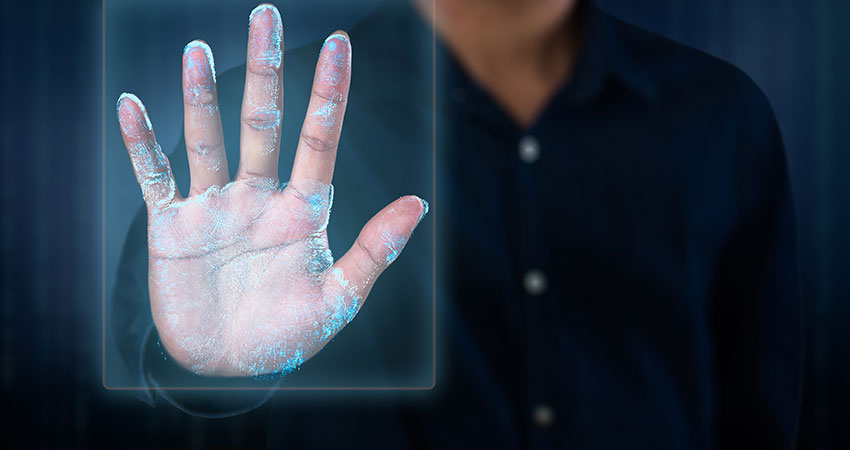Speeding up payments is a reoccurring theme for innovation in shopping. The checkout stand often feels like a massive headache for retail customers. New innovations like self-scanning, paying by mobile phone and improved checkout lanes are examples of innovations (Wells, 2017). Last year, Amazon made the headlines by introducing a store where customers purchase products without being checked out by a cashier or using a self-scan station. On the 29th of September 2020, Amazon introduced their latest effort to speed up shopping by introducing Amazon One. This innovation lets you pay with the palm of your hand!
The first time a customer comes to a store, the credit card is linked to a scan of your hand. After the first time, customers can pay for products by placing their hand about 10 centimetres above the scanning device. The camera takes multiple images of fine lines and ridges, as well as veins. Amazon specifically chose hand palm recognition because it can be accurately matched. Amazon claims it is more accurate then using face recognition or fingerprints (Andriotis, 2020). Amazon has introduced it in two Amazon Go stores in Seattle, and is planning to expand in the upcoming months. It pleases many customers, as contact-free payments and convenience are highly appealing for a lot of customers today.
Although the technology sounds appealing, I personally do have my doubts. First of all, the advantage over using your phone are small. With your phone, paying is already convenient without direct contact to the system. Second and most importantly, concerns regarding privacy should be taken into account. Handing over biometric data to one of the largest retailers might not be the smartest idea. Although Amazon is claiming that the data will not be stored locally, but saved in an extreme save and encrypted environment, they still own this data. Especially since Amazon has received claims from multiple privacy advocates who are concerned about facial recognition in other products. Finally, I would have my concerns about the potential for fraud. People can easily link stolen credit cards to their hands, making other people pay for the products. As the hand is not linked to a particular person but just to the card, fraud could be a major problem.
Paying for your groceries just by scanning your hand would be functional, but I do not think that the limited increase in convenience weighs up to the potential fraud and privacy concerns raised by the innovation. Do you agree, or should this be ‘the new way’ of paying?
References:
Andriotis, A. (2020). Cash, Plastic or Hand? Amazon Envisions Paying With a Wave. WSJ. https://www.wsj.com/articles/cash-plastic-or-hand-amazon-envisions-paying-with-a-wave-11579352401
Wells, J. (2017). Faster front ends: How supermarkets are speeding up checkout. Grocery Dive. https://www.grocerydive.com/news/grocery–faster-front-ends-how-supermarkets-are-speeding-up-checkout/534852/


Hi Nino,
Thanks for the interesting blogpost. I personally did not know about this technology yet, and I also find it very difficult to believe that this will maybe be our future for paying. I do recognize the irritating feeling of standing in line for a long time at the check-out. But with the self scanning services and paying with mobile phone, these problems have found their solutions. I like how new innovations are found to speed up these processes even more, but I share your doubts brought up in this blogpost. Biometric information is very useful and great for personalization, however it needs to be stored very well because it’s vulnerable to privacy. I don’t think it is a good idea that Amazon has all this data. On the other hand, we use biometric data on Apple devices, so why do we think that is a good idea and that is not when Amazon has it? And where do we draw the line with giving out our personal data?
Very interesting debate I think!
Cheers,
Hillene